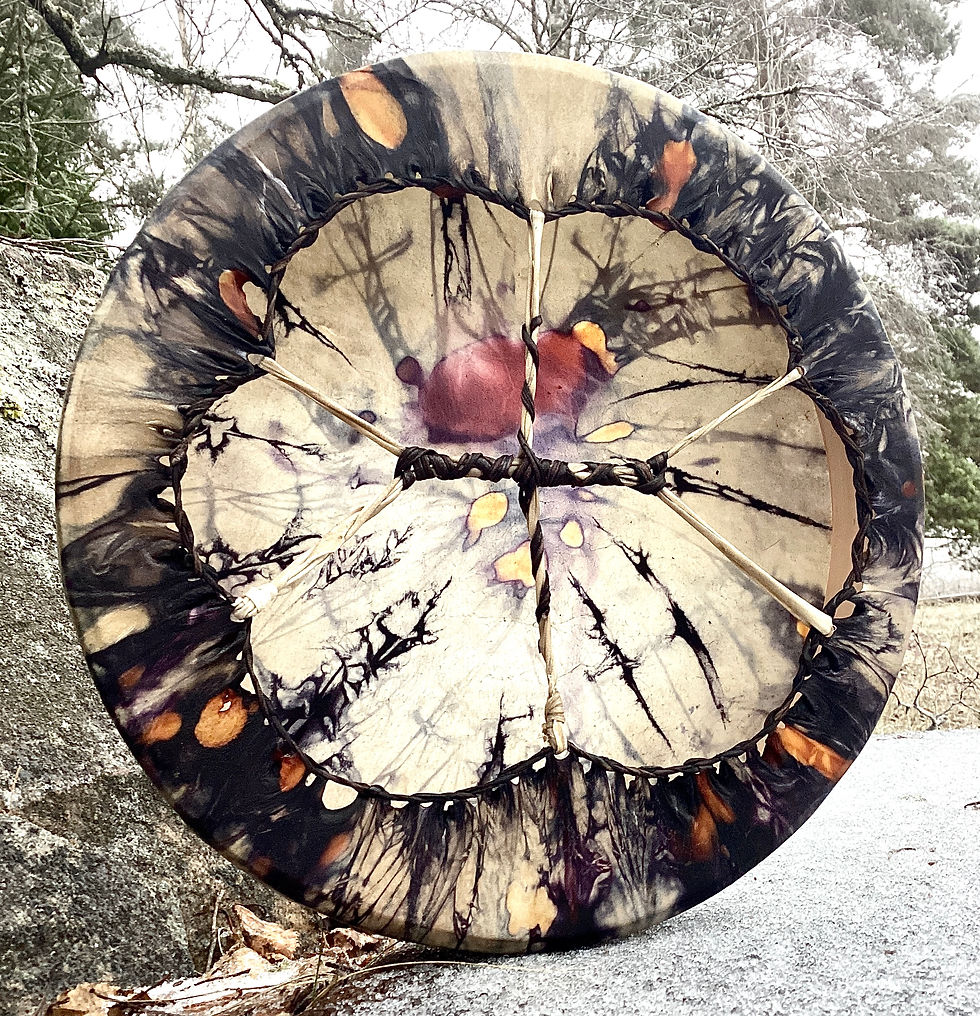DRUMS
Its been a long way since I traveled for the skins and timber, prepared them into desired form, weaved them together, photographed, recorded and delivered here in front of you. And longer even since I first sensed the call to create a drum myself.
Thank you for being here, there would be no purpose to my work otherwise.
Sound recordings are to be listened to with a good quality stereo or head phones else they are misguiding!
Instruments are oriented from smallest to biggest.
* * *
The Drum-maker
One autumn morning of 2012 I received a call from a friend about a deer being shot.
,,Do you want the skin” he asked.
And so the fourteen day process of making my first drum began.
Some weeks after that in a little village in southern Spain a woman with small boy stoped me asking if Im Filip the drum-maker. I started laughing but agreed to make a drum with her boy as a present for his 6th birthday.
And so my journey as a drum-maker began.
Later on, after settling in Scandinavia - following my yearning for expressing the spirit and beauty of nature - drum crafting together with artistic carpentry, woodwork and music became my profession.
I feel proud to be able to share with you some of my work.
With love and respect
Filip
Choosing a drum
Often people know which one is their drum when seeing it. But here are some (also practical) aspects to consider:
Sound and general appearance
This is a very personal choice so there is not much advice to give. The rule is
the bigger the drum the ‘bigger’ the sound.
Size/Weight
Are you going to travel with it? Does it need to fit in a cabin luggage (It is possible to use it as a storage for clothes,though), can you hold it comfortably for longer periods of time?
Affordability
If you feel like there is an instrument that you really want and you can't afford it in the moment let me know and we can find a solution (paying in smaller amount for ex.)
Tuning System
The skin is a living organism and its keeps accommodating itself to the surrounding conditions all the time. Too humid = the skin softens = sound goes down.
Too dry = the skin gets harder/tenser = the sound goes high.
Traditionally, fire or sun would be used to bring a drum into playable conditions.
To adjust the sound in an easy way I add a bike tube put in between the frame and the skin (with the valve sticking inside the drum). By blowing air in you tune it up, by letting air out you tune it down.
In case all the air is out and the sound is not low enough yet, little bit of water could be by applied over the skin surface. With couple of minutes sound begins to lower.
Maintenance
It is a rather sturdy instrument but there is still few things to keep in mind:
-
Do not leave it unattended exposed to strong heat (fire, stove, car parked on direct sunlight..), it may break the skin or frame by over tensing.
-
I strongly recomend to release the air out of the drum after every playing even if the instrument is stored in the same space all the time. Humidity and temperature changes can be huge from one day to other and and what was a perfect amount of air in today's rainy day may cause an over-tension in tomorrrow's sunny one.
-
A drum bag, fabric, scarf will prevent your instrument from scratches.
-
Cream/fett needs to be applied onto the front and back skin surface. Could be any fett you won't mind the smell of-coconut works great. No need to oil the strings. Twice a year is good enough.
About the materials
Frames:
Im making the frames myself using a steam-bending process.
All wood is sourced from a local sawmill.
Skins:
The skins Im using come from Scandinavia, mainly north of Norway and Sweden. With occasional exceptions I only use deer, reindeer and moose skin.
Non of these animals was shot for its skin, its a matter of regular hunting where skins would be normally left behind as there is very little use for them
Drum building workshops
Trumbyggarkurs Bygg din egen shamantrumma
Dates for 2025
16-18 May / Svenshögen / Sweden
25-27 July Drum building retreat in the North / Hoverberg / Sweden (connect with me for details)
12-14 September / Västerås / Sweden (connect with me for details)
Laughters and tears, moments of frustration, breakthroughs and celebrations..
Don’t be mistaken-making your drum doesn’t come for free. You will be challenged, you will be mirrored and confronted by the process. Your hidden limiting self-beliefs will surface, fingers ache by pulling the skin, most likely you will utter few heavy sighs.
But know that you will leave proud. You will leave empowered and with grateful heart, seeing the drum in your hands, understanding it came through you and intimately knowing each little bit of it and the journey that led you to it.
Making your drum is much more than you think































































